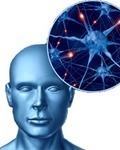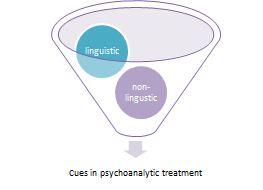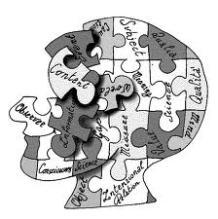Psychoanalysis and the Analysis of Discourse
‘I would not have believed … that psychoanalysis could mean so much to someone
else or that anyone would be able to read so much in my words.’
Freud's letter to Lou Andreas-Salomé, 9 Nov. 1915

|
Introduction |
· What is Psychoanalysis?
The American Psychoanalytic Association defines modern psychoanalysis (which was founded by Sigmund Freud), looking at it from two different perspectives: (1) as a general theory of human behavior and (2) as a method of treatment of mental or psychological complications.
The focus of this webpage, however, is on psychoanalysis in the second sense: as a method of treatment. From this aspect, psychoanalysis is based on the idea that certain unconscious factors (factors which the patient is unaware of) may determine particular emotions, attitudes and behaviors of patients. In psychoanalysis, therapists typically
“make use of exploration of unconscious thoughts and feelings, understanding aspects of the relationship between therapist and patient, which may relate to underlying emotional conflicts, interpretation of defensive processes which obstruct emotional awareness, and consideration of issues related to sense of self and self-esteem.” (retrieved from http://www.apsa.org/About_Psychoanalysis.aspx on Feb.28, 2014).
For an overview of psychoanalysis click on the following link: http://video.about.com/psychology/Overview-of-Psychoanalysis.htm
The Psychoanalytic Method of Treatment
Psychoanalysis, as a method of treating mental complications, involves two parties (i.e the analyst and the patient) which come together to reach a common goal. Through the process, the analyst guides the patient to reveal any immediate thoughts and ideas that come to his mind. In other words, the patients’ mind is allowed to move freely between ideas, a process which subsequently leads to the uncovering of the unconscious. The analyst encourages the patient to express all his thoughts, whether relevant or irrelevant to the psychotherapeutic context, through monologue or through engaging in conversation with the analyst.

With disciplined effort, the patient gradually reveals more and more to the analyst, not only what is in the foreground but what is in the background and underground. By doing so, the patient inevitably will live out his or her unconscious dynamics in the relationship with the therapist.” (Jennifer Kunst, 2014 as retrieved from http://www.psychologytoday.com/blog/headshrinkers-guide-the-galaxy/201401/what-is-psychoanalysis on Feb. 25, 2014)
According to Buchholz & Kachele (2013), psychoanalysts attempt to remind patients of elements which are excluded from their conversation, but which affect the patients mental and emotional state. The two scholars also point out that what is strived for in psychoanalysis is to capture the invisible, however, this is not possible without a thorough anlaysis of “what can be simply documented” and “what can be heard or seen” (p. 14).
To put it in a nutshell, in psychoanalytic treatment, the analyst collects any relevant linguistic and non-linguistic cues from the speech of the patient. He then makes use of such cues (particularly the linguistic cues) in order to make sense of, comprehend and consequently interpret the patient’s speech and its underlying unconscious beliefs and ideas that give rise to the patients’ problematic mental state.

Psychoanalytic treatment and Discourse Analysis: How do they relate?
· Discourse in Psychoanalysis: A Core Concept
“Psychoanalytic Discourse is a negotiation for uncovering and attenuating dysfunctional discrepancies and conflicts between general social meaning and personal idiosyncratic meaning” (De Beaugrande, as retrieved from http://www.beaugrande.com/Psychoanalysis%20%20Psychology%20Discourse.htm). As seen in the previous section, discourse and its interpretation and analysis are among the core concepts in psychoanalysis and psychotherapeutic treatment. Therefore, “language is crucial in the therapeutic process of psychoanalysis because it serves as the principal means by which unconscious mental processes are given expression through the verbal exchange between the analyst and the analysand”.
Based on all this, the two areas of psychoanalysis and discourse analysis are crucially linked and interconnected areas of study .

Discourse analysis and research on Psychoanalysis
A number of research studies have focused on the importance of discourse and conversation analysis in psychoanalytic treatment over the years (Steiner, 1972; Buccholz & Kachele, 2013; Schneider, 2013; Tavlin, 2013, among others). Due to the lack of space in this web project, however, only a couple of these studies will be briefly pointed to here in order to illustrate the significance of the topic in the vast field of discourse analysis.
Buckholz and Kachele (2013), for instance, propose the established paradigm of Conversation Analaysis (CA) as a useful tool in the analysis of psychoanalytic conversations between patients and therapists. To this aim, they utilize conversation analysis in order to analyze what actually happens in the consulting room throughout the psychoanalytic conversation. The researchers also provide examples such as resistance in the therapist-patient relationship and in the psychoanalytic encounter. Overall, they find conversation analysis as a useful tool in psychoanalysis.
Schneider (2013) also studies the role of language in psychoanalysis and in the encounter between the therapist and patient. To this aim, the researcher looks at different speech acts through which psychoanalytic encounters are carried out. He carries out a discourse analysis on a therapy session and reports the results. Schneider concludes that if we are to carry out a successful psychoanalytic treatment session we must necessarily pay close attention to the linguistic forces of utterances. He also points to the importance of language in psychoanalysis by stating that “linguistic dialogical/discoursal cues are our early warning system for knowing when something of psychodynamic and relational significance is going on.” (p. 17)
Conclusion
Based on all the above, the importance of language and discourse in psychoanalytic practice become apparent. Therefore, the importance of discourse and conversation analysis in psychoanalysis and psychotherapeutic treatment should not be overlooked. Furthermore, discourse and conversation analyses should be emphasized as an undeniable component of psychoanalysis and the intersection of the two fields of science should be taken seriously. Overall, discourse analysis can be a powerful tool throughout the process of psychoanalysis and psychotherapeutic treatment.
Other Useful Links:
· http://www.apsa.org/About_Psychoanalysis.aspx
· http://www.academyprojects.org/programs/parker.htm
· http://www.lacan.com/ericlaurent.html
· http://wapol.org/en.template.asp
|
|
References
Buchholz, M. & Kachele, H. (2013). Conversation Analysis- a powerful tool for psychoanalytic practice and psychotherapy research, Language and Psychoanalysis, 2(2), 4- 30.
Schneider,P. (2013). Language Usage and Social Action in the Psychoanalytic Encounter: Discourse Analysis of a Therapy Session Fragment, Language and Psychoanalysis, 2(1), 4-19.
Steiner, G. (1972). On difficulty. Oxford University Press.
Tavlin, Z. (2013). Signifying truth: Augustine, Lacan, and a theory of language, Language and Psychoanalysis, 2(2), 64-76.

